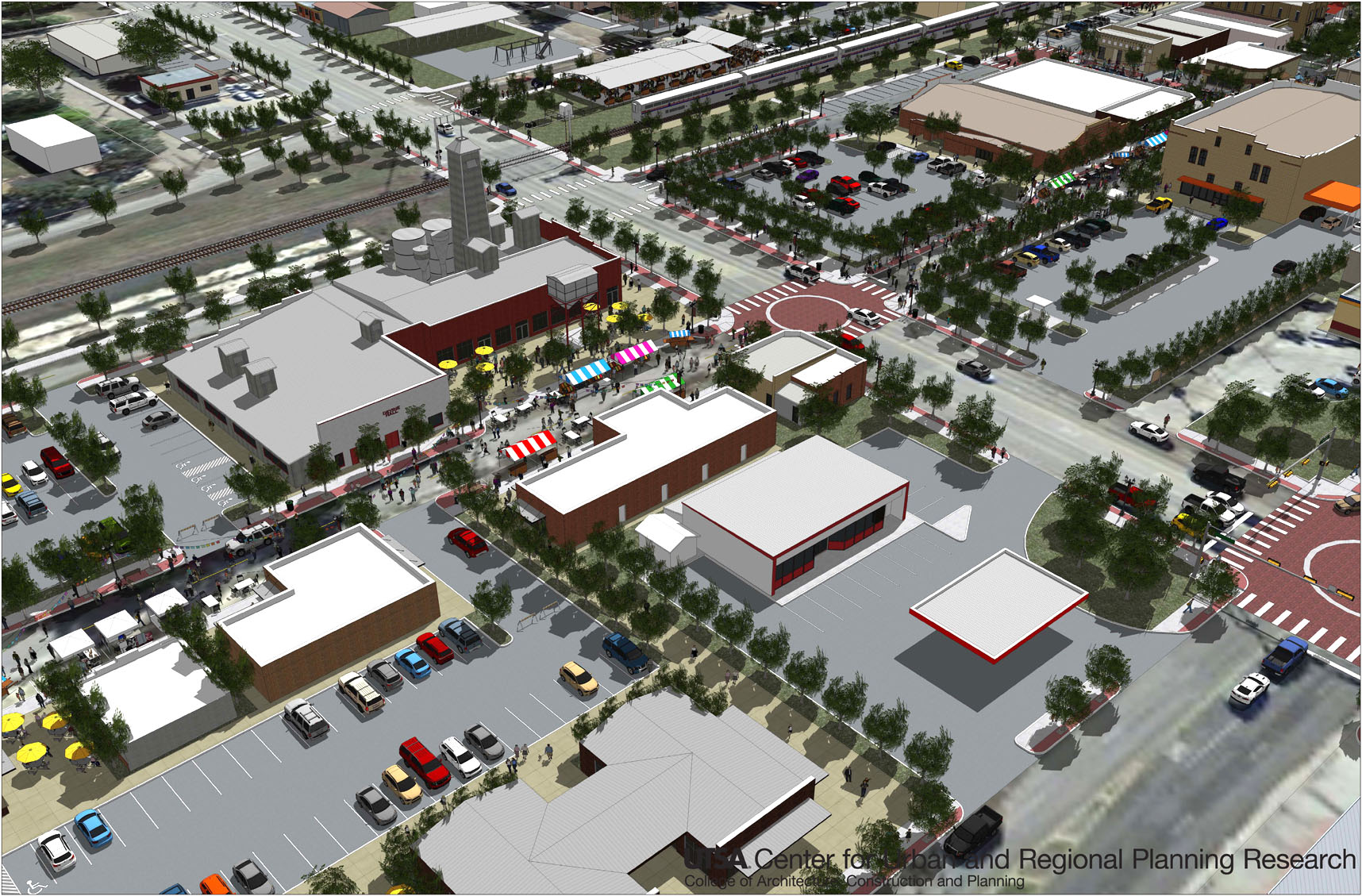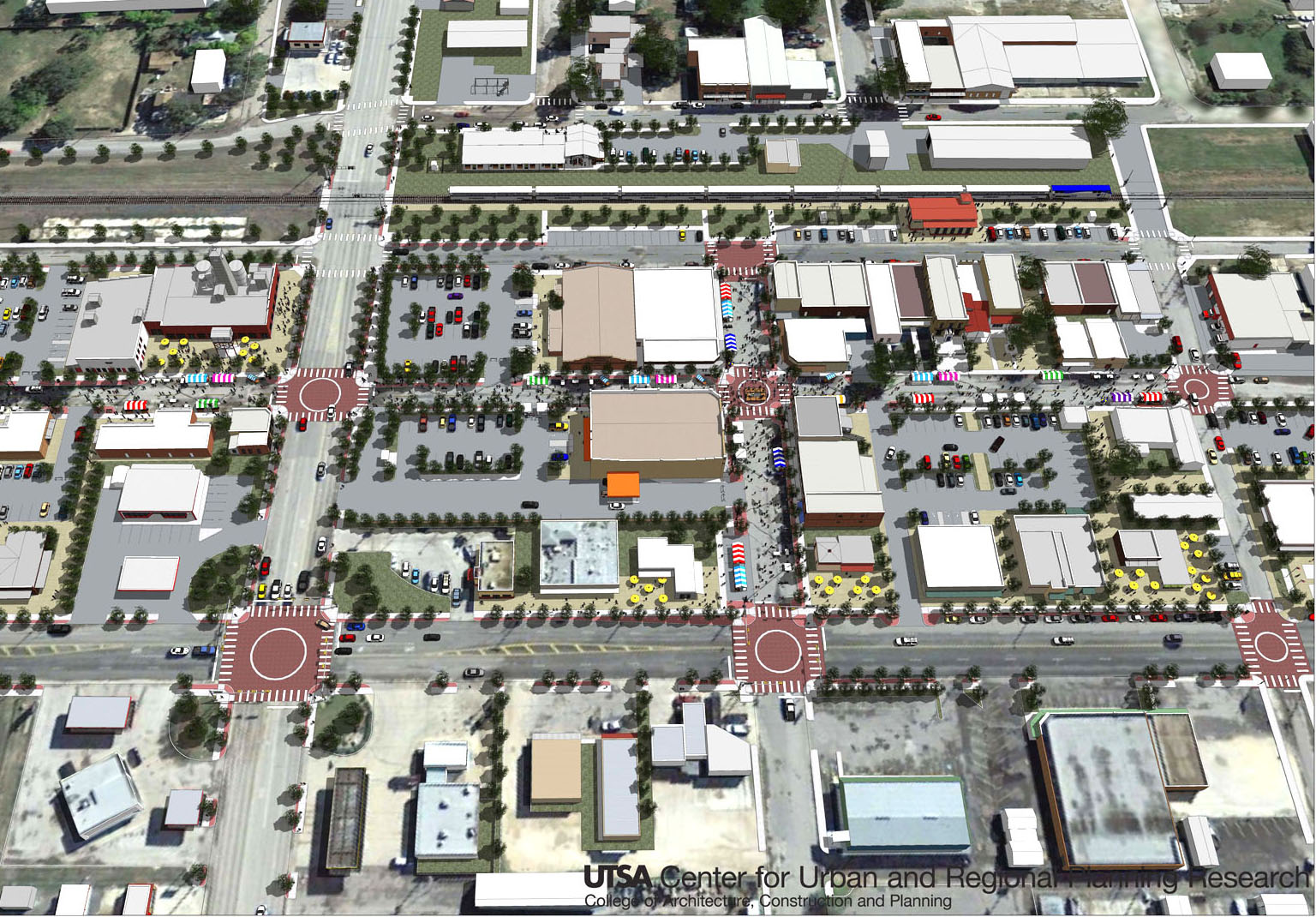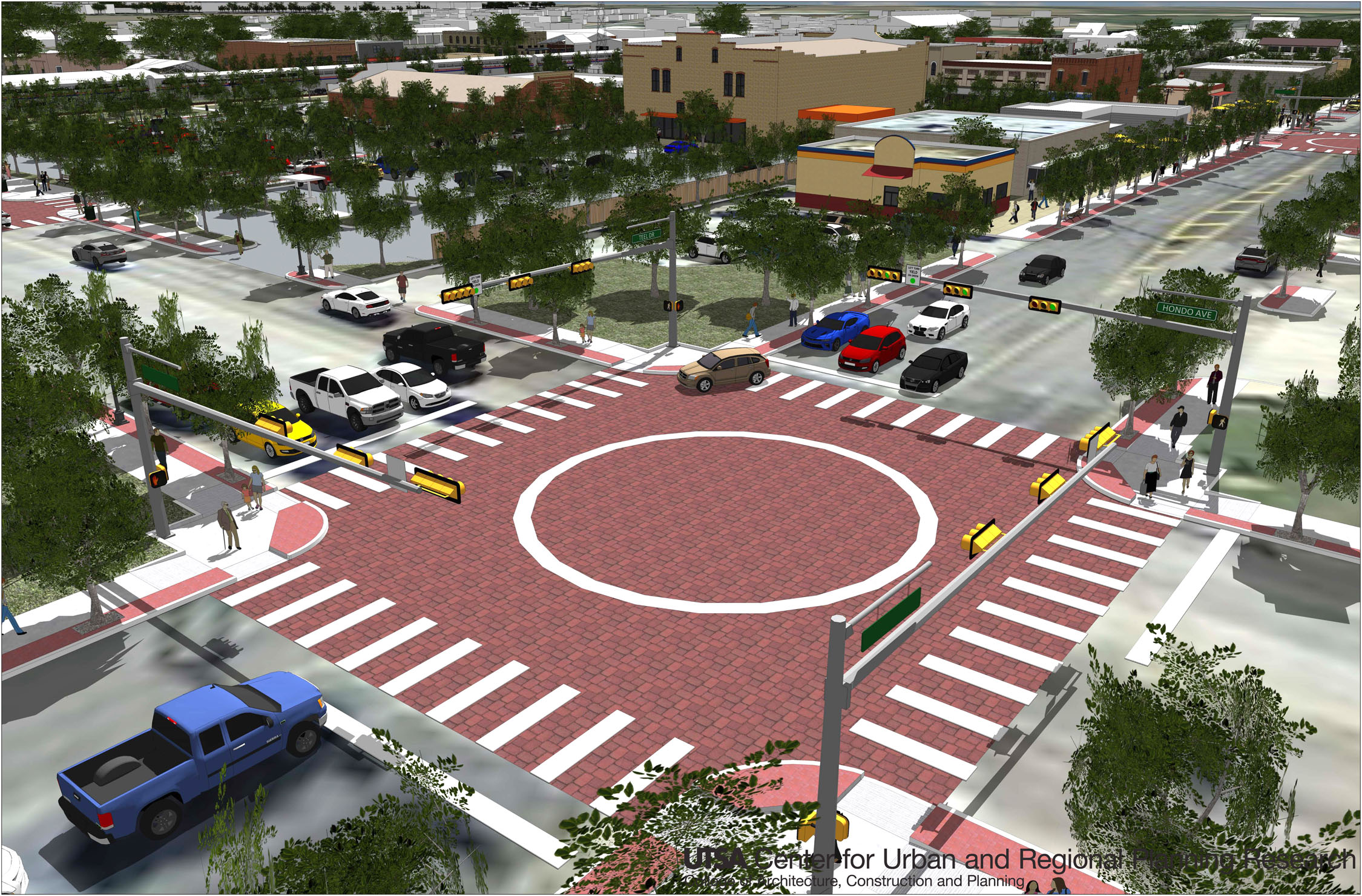

Representatives from UTSA’s Center for Urban and Regional Planning Research and the Rural Business Program presented a vision plan for the future of Devine from IH-35 down Hwy. 173 to the downtown district in a public meeting held in the George S. Woods Community Center on March 30.
The project began at the Regular Council meeting on March 15, 2016, when Council unanimously agreed to a $5,000 local match for the $30,000 proposal. At the time, City leadership was focused on developing the 40-plus City-owned acres along IH-35 in order to spur commercial development and enlarge the tax base.
“As a City Council and as a City administration, if we want to look at developing the city, developing that area, we’ve got to have some vision on what that could be like,” then-City Administrator Joe Ramos said at the time.
Though the City’s focus has seemingly narrowed to prioritize the construction of a new City Hall, Council granted the UTSA team a no-cost extension on the study, which culminated with the presentation on March 30.
Bert Moyer, a Research Assistant with the Center for Urban and Regional Planning Research, took the lead on the presentation, explaining that it was designed to guide City leadership and community stakeholders regarding future development.
“What I’m showing you tonight is a wish list,” Moyer told the citizens in attendance, which included Mayor Bill Herring, Councilwoman Kathy Wilkins, and Interim City Administrator Dora Rodriguez. “Nothing’s been voted on, nothing’s going to be done tomorrow. This is a wish list of things that could improve the quality of life for the citizens, but also could create a destination where visitors come in and maybe spend the weekend and spend money and increase the tax base.”
Moyer presented the findings of a gap analysis that combined demand data from the Bureau of Labor Statistics’ Consumer Expenditure Survey with supply data from the Census of Retail Trade made available by the U.S. Census to show the difference between what citizens spend and what is provided by retailers in various categories.
“The amount of money that was expected to be spent by the people of Devine as a whole is $160M, but the retail sales, the receipts that your businesses showed, were $281M,” Moyer said. “So what that tells us is that you have $121M coming from outside the community and being spent here.”
A large surplus was centered in motor vehicles and parts dealerships, where sales totaled $220M.
Moyer specifically called out opportunity gaps, where demand is greater than supply, in the foodservice and drinking places category.
“So you have a demand of a little over $20M, but your sales are only showing $4.6M,” Moyer said.”So about $16M or $15.5M of that is going to San Antonio or somewhere else.”
Clothing and clothing accessories also had a large opportunity gap, with a demand of $7.5M compared to sales of $67,000.
“If this money is spent inside the community, it’s going to increase your sales tax,” Moyer said. “And then that sales tax is going to allow the city to be able to spend this money on some of these projects and recommendations to improve the quality of life for the citizens.”
Moyer’s presentation included 3D renderings of IH-35 and 173 as they could be, including commercial development on the City’s 40-plus acres along the interstate.
“One of the first things we looked at was potential for commercial development along the interstate,” Moyer said. “Lytle, Natalia, they’re all doing the same thing. They realize that they can capture a lot of this traffic that’s coming down 35, and again, this is inside your City limits, so if you’re able to bring in a large anchor store, of course your sales tax is going to go up, and that’s going to allow the City to be able to possibly finance some of these other projects.”
Those other projects included beautification of downtown Devine as well as the 173 corridor, the extension of sidewalks to make downtown pedestrian-friendly, and the restoration of historic buildings.
“You guys have a wealth of historic buildings, and they’re assets to the community,” Moyer said. “The problem is that once they’re gone, they’re gone forever.”
He pointed to the refurbished Pearl Brewery complex in San Antonio as a template for what could be done with buildings in downtown Devine, specifically the unused grain silo across the street from the Driscoll Public Library.
“We think that’s a great facility that could be turned into something very wonderful, I believe,” Moyer said. “[The Pearl Brewery] is on a much larger scale, but they have created this food/mall Mecca, and now people are coming in from all over, so there’s a lot of potential. Of course the scale is a little bit different…but that’s your gateway, that’s one of the first things you see when you come to Devine.”
Another possibility in the future is a train depot. Amtrak is currently conducting a feasibility study on the possibility of improving Union Pacific’s railroad lines enough for a high-speed line between San Antonio and Georgetown, outside of Austin. The vision for the Austin-to-San Antonio line is to eventually connect it to Laredo and Monterrey, Mexico. If the passenger line comes to fruition, it would run through Devine, giving the city the opportunity to be a stop.
Moyer also showed a rendering of a new City Hall, located on the former Briscoe and Whitfield properties across the street from the First Baptist Church that were recently purchased by the church.
“We had heard that there were talks of City Hall possibly relocating,” Moyer said. “This is basically a parcel on 173, and we’re showing how that building could be oriented on that parcel and how that would work with the adjacent streets.”
Along with the assumption of a new City Hall, the plan called for the Driscoll Public Library and the George S. Woods Community Center to be downsized to fit into the current City Hall building. The space that is now home to the library and community center would then be turned into a special events center
“It would be something where you would have and host people coming from outside of the community where they could host there even there, whether it be an oil company, or some type of convention,” Moyer said. “But the idea is to have it closer to 35 and be able to utilize this space in keeping people in the downtown district.”
Moyer closed the presentation by reminding those in attendance that what UTSA had come up with were just recommendations, and that it would take the cooperation of the public sector, the private sector, and community stakeholders to implement any changes or improvements.
“It’s a long-term strategy to revitalize Devine and its historic center, improve quality of life, and enhance its economy,” Moyer said. “But what’s very important – the community has to organize itself.”
He ended with a quote that is commonly attributed to Benjamin Franklin: “If you fail to plan, you’re planning to fail.”
By Marly Davis
Staff Writer

